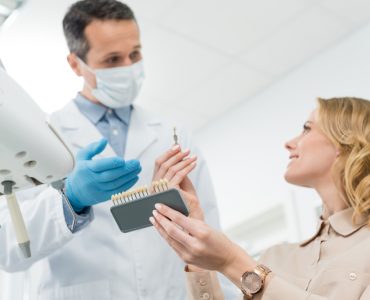A sac that is fluid-filled is known as a cyst. It can grow in any of the body parts. They are of various sizes and the fluid in them is either dilute and water like or concentrated and paste like. Cysts that are solid are called tumours.
The ovary is a circular organ in the reproductive system of a female, which releases an egg every month. Every female body has two ovaries. The egg is produced in a tiny structure called a follicle, which exists inside the ovary. This follicle has fluid in it in order to safeguard the egg, and it tends to burst when the ovary releases the egg. The egg released goes into the uterus and can be fertilised by the sperms of a man. The ovaries make hormones that are responsible for regulating the woman’s periods.
A cyst that grows inside the ovary is known as an ovarian cyst. These can develop up to five or six centimetres in width and remain for around four or more weeks.
Symptoms of an Ovarian Cyst
Usually ovarian cysts are quite small and non cancerous. They have no chronic symptoms. Bigger cysts cause several problems, some of which have been listed below:
Noticeable changes in the menstrual cycle, like irregularity and lighter or heavier than usual.
Uneasiness and pain in the lower abdomen, in gaps or constant. At times, this may happen after having sex.
Frequent urge to pass urine, due to the pressure caused by the cyst on the bladder.
The amount of hormones produced gets abnormal, leading to excessive hair growth or change in the growth of breasts.
If a woman has polycystic ovarian syndrome or endometriosis, she is likely to have a few other symptoms too.
If the cyst grows on a stem of the ovary, the stem may get twisted, stopping the blood from going into the cyst and leading to enormous pain in the lower area of the abdomen. This condition needs to be treated in the hospital and is known as torsion. Alternatively, there might be a condition when the cyst might burst, causing extreme pain. Infrequently, an ovarian cyst might prove to be an early form of ovarian cancer.
Causes of an ovarian cyst
Ovarian cysts have been classified into several types on the basis of its causes. Some of them are:
Functional ovarian cyst – this is the most important of all and is of two types:
Follicular cyst – this grows if an egg has not been released by the follicle, or the fluid is not shed out after the release of an egg.
Corpus Luteum cysts – this develops when after an egg has been released, the tissue which is left behind fills the blood or fluid.
Dermoid cyst – these consist a series of tissues like teeth, skin and hair, as it generates from cells that create eggs in the ovaries.
Cystadenoma – grows from those cells which cover the outer area of the ovary.
Endometriosis – this develops when the tissue that outlines the uterus emerges in other parts of the body.
Polycystic ovarian syndrome – this leads to the growth of numerous small non-cancerous cysts on the ovaries. This is generally a result of an imbalance in the hormones.
Diagnosis of Ovarian cysts
Mostly ovarian cysts are not diagnosed as they do not cause any symptoms. In alternative cases, an examination of the pelvis is carried out. If there is a doubt of the presence of an ovarian cyst, the patient is referred to a gynaecologist, who then does a vaginal examination. To confirm the diagnosis, an ultrasound needs to be done. The ultrasound helps in determining the type and various qualities of the cyst. In much complex cases, a CT scan or a MRI is done. A blood test is done to check for a protein (called CA 125), which helps in identifying if the cyst is malignant or benign.
Treatment
Treatment for an ovarian cyst is done on the basis of age, symptoms and the appearance of the cyst.
In a few cases, observation might be the only thing to be done as functional cysts are common among pre menopausal women. An ultrasound is done every month to have a close look at the cyst.
It a cyst emerges during pregnancy, is causing symptoms, or is large; it probably needs to be removed. Also, a cyst is removed when the doctor is not able to identify its type. Small cysts can be taken out using the method of laparoscopy. A method called laparotomy is used if there is a possibility of the cyst bursting and spilling while being taken out.
Unfortunately, if the cyst is cancerous, there might be a need to remove the uterus, the ovaries, a few lymph nodes and the omentum.













